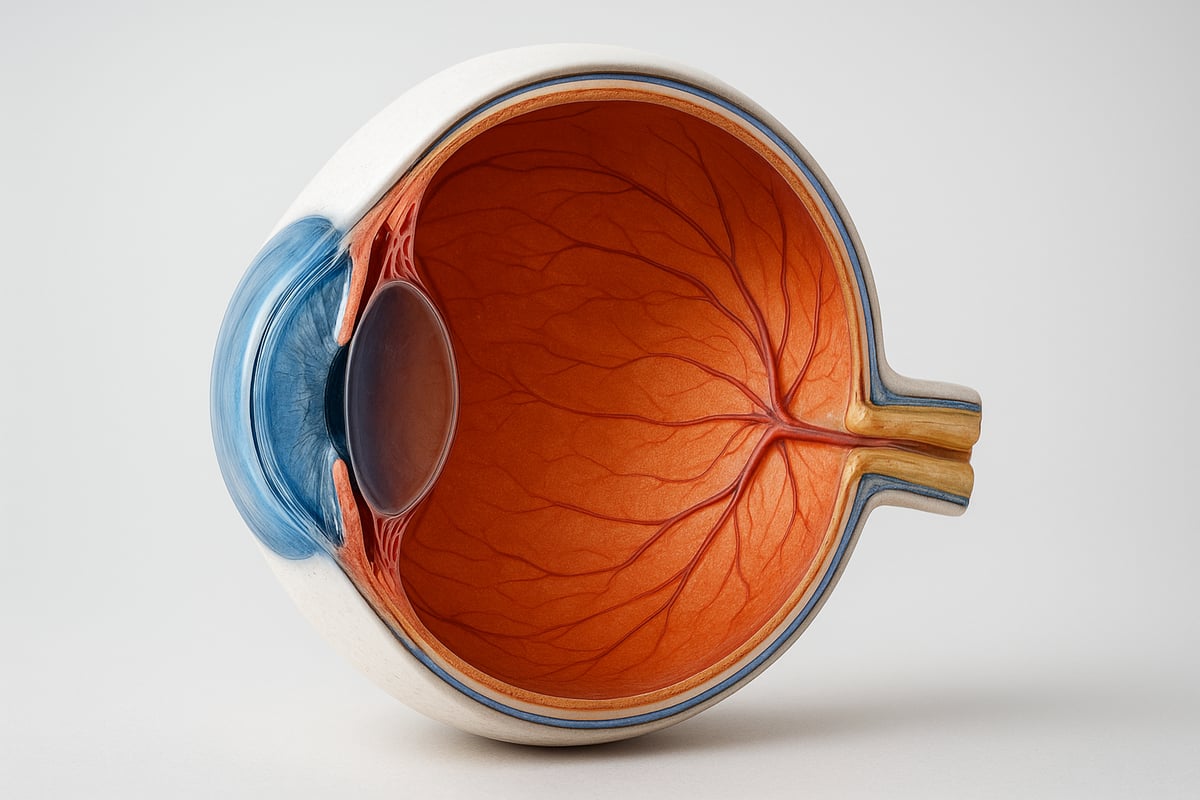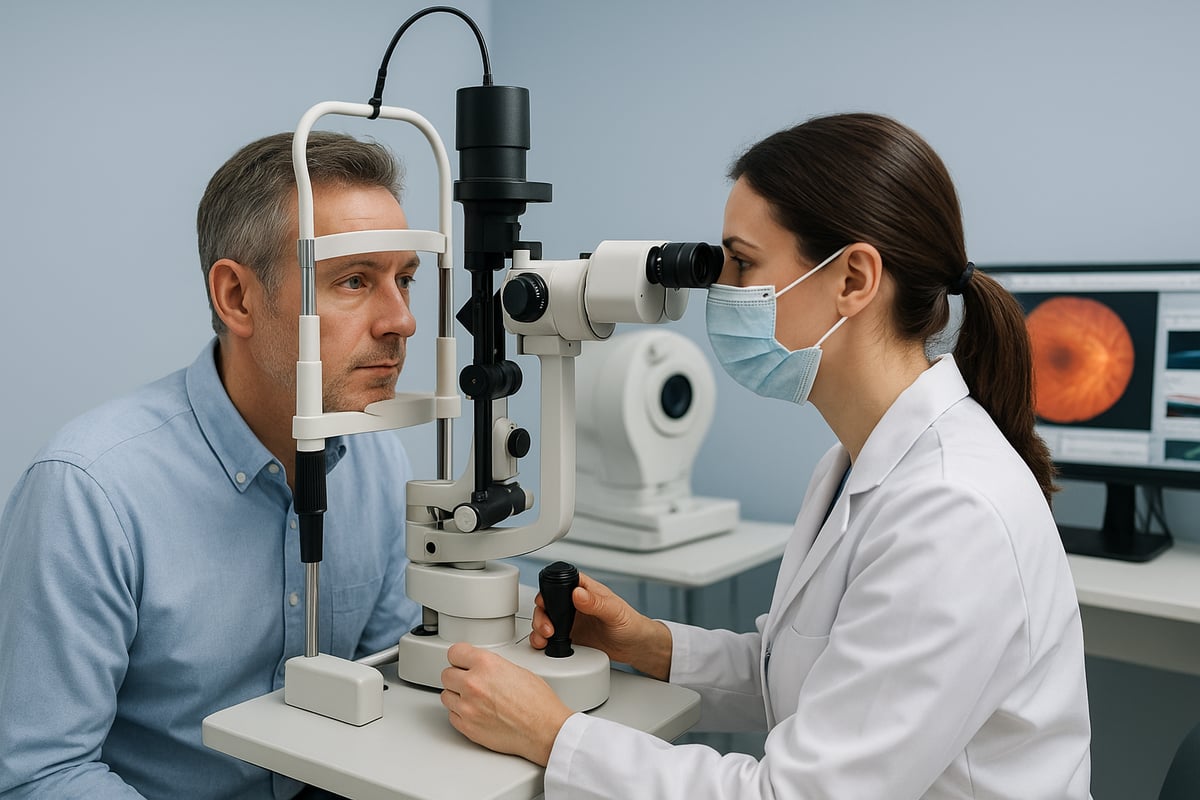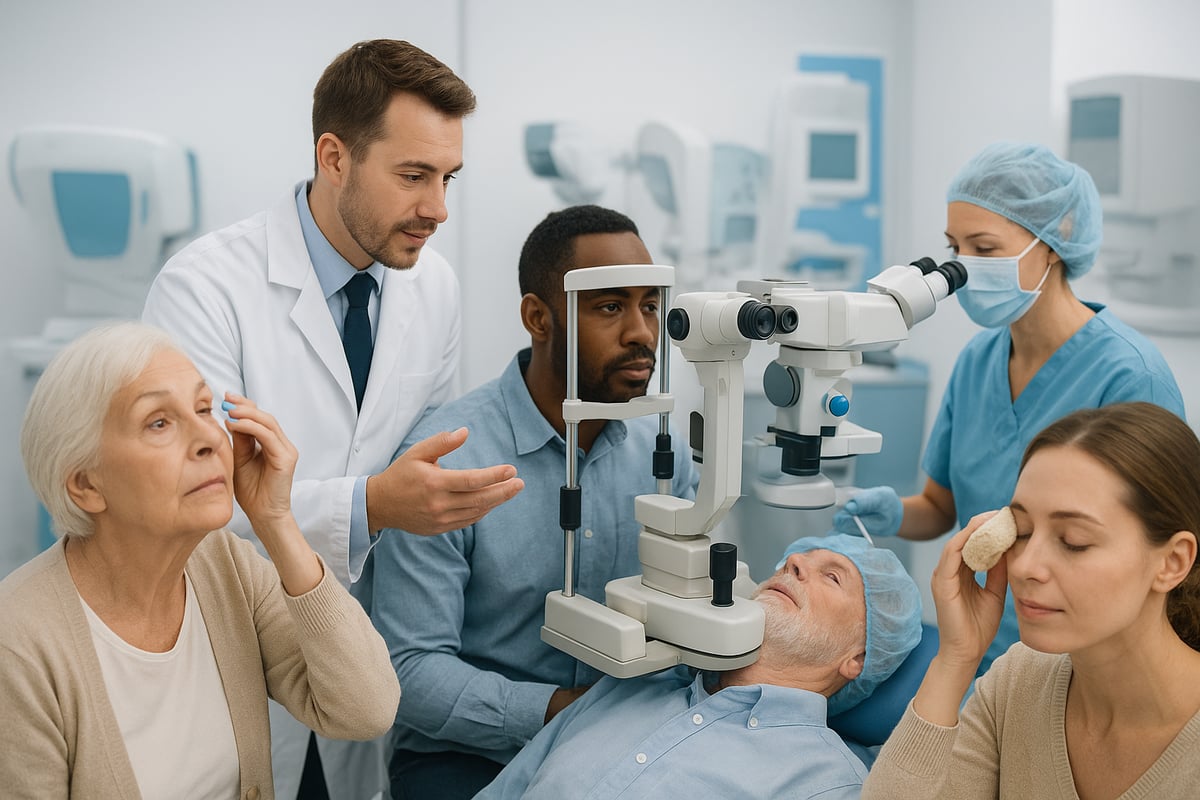In 2025, innovative approaches to eyeball treatment are transforming eye care worldwide. With vision problems on the rise, it is crucial to stay informed about the latest expert strategies. This guide delivers authoritative insights and clear action steps for maintaining healthy eyes. You will discover up-to-date information on common conditions, advanced diagnostics, cutting-edge treatments, effective home care, and when to seek professional support. Early intervention and modern therapies can make a significant difference. Take proactive steps today for clearer vision and long-term eye health.
Understanding Eyeball Anatomy and Common Conditions
The foundation for effective eyeball treatment lies in understanding how the eye works and what can go wrong. The eyeball is a marvel of biological engineering, with each part playing a critical role in vision and overall eye health.

Structure and Function of the Eyeball
The eyeball consists of several key structures: the cornea acts as the eye’s clear front window, focusing incoming light. The sclera is the tough, white outer layer that provides shape and protection. The retina lines the back of the eye, converting light into electrical signals. The optic nerve then transmits these signals to the brain, enabling sight.
A stable tear film coats the ocular surface, maintaining moisture and defending against infection. Ocular surface health is vital, as disruptions can lead to discomfort or disease. The unique anatomy of each structure influences which conditions may develop and how an eyeball treatment plan is chosen. For a deeper dive into these structures, see this Anatomy, Head and Neck, Eye resource.
Most Prevalent Eyeball Disorders in 2025
In 2025, several conditions are especially common. Pterygium and pinguecula are benign growths often linked to UV exposure. Chalazia and styes arise from blocked glands or infections, causing localized swelling. Corneal abrasions and injuries are frequent in active and older adults, while rare eye cancers like intraocular melanoma pose serious risks.
According to the World Health Organization, over 2.2 billion people globally live with vision impairment. Recognizing these conditions early is essential for successful eyeball treatment and preserving sight. Symptoms often include redness, discomfort, or changes in vision, prompting further assessment by an eye care professional.
Risk Factors and Demographics
Several risk factors influence the likelihood of developing eye conditions. Age is a major factor, with older adults more prone to degenerative changes. Genetics can play a role, as can lifestyle habits such as outdoor work or frequent contact lens use. Chronic dry eye and environmental factors like UV exposure also increase risk.
Digital device usage has surged, contributing to eye strain and discomfort across all age groups. Understanding these risks helps guide preventive strategies and inform the right eyeball treatment. High-risk populations benefit from regular screenings and tailored interventions, making awareness a key part of maintaining eye health.
Diagnosing Eyeball Problems: Modern Approaches
Modern approaches to diagnosing eye conditions have advanced significantly, offering patients a clearer path to effective eyeball treatment. Early and accurate diagnosis is crucial in preserving vision and guiding the right course of action.

Clinical Evaluation and Patient History
A thorough clinical evaluation is the foundation of any successful eyeball treatment. Eye specialists begin by collecting a detailed history of symptoms, including pain, vision changes, and recent injuries.
Slit-lamp examinations and visual acuity tests are standard tools that allow clinicians to closely inspect the cornea, lens, and retina. These steps help distinguish between benign issues such as minor infections and more serious threats like tumors. Accurate diagnosis guides the next steps in the eyeball treatment process.
For a deeper understanding of common conditions that may be identified during this stage, see the Common eye disorders overview.
Advanced Diagnostic Technologies
Technology is revolutionizing how eye problems are diagnosed, making eyeball treatment more precise than ever. Optical coherence tomography (OCT) provides high-resolution images of the retina and cornea, allowing for early detection of subtle changes.
Fundus photography and fluorescein angiography offer detailed views of the eye’s blood vessels, aiding in the diagnosis of vascular issues. Artificial intelligence is now assisting clinicians in screening and analyzing complex data, improving accuracy and efficiency.
| Diagnostic Tool | Purpose | Benefit |
|---|---|---|
| OCT | Retinal and corneal imaging | High resolution, early detection |
| Fundus Photography | Vascular assessment | Detailed visualization |
| AI-assisted Diagnostics | Automated screening and analysis | Improved accuracy |
These advances support more tailored eyeball treatment strategies.
When to Seek Immediate Medical Attention
Recognizing when to seek urgent care is critical in preventing permanent vision loss and ensuring timely eyeball treatment. Red flag symptoms include sudden vision loss, severe eye pain, trauma to the eye, or noticing dark spots on the iris.
Despite the seriousness of these signs, only about 35 percent of people with acute eye symptoms seek medical attention within 24 hours. Delaying professional evaluation can result in irreversible damage.
If you experience any alarming symptoms, do not wait. Prompt intervention can make a significant difference in recovery and long-term eye health.
Step-by-Step Eyeball Treatment Options in 2025
Protecting your vision in 2025 means understanding both traditional and cutting-edge approaches to eyeball treatment. Whether managing a minor issue at home or considering advanced therapies, knowing your options empowers you to make informed decisions for your eye health.

Home Remedies and First-Line Management
For many common eye problems, initial eyeball treatment can start at home. Simple strategies may relieve discomfort and prevent complications.
- Apply a warm compress to the eyelid for styes or chalazia. This helps unblock oil glands and reduces swelling.
- Use preservative-free artificial tears for dry eye, pinguecula, or pterygium symptoms. These drops restore moisture and soothe irritation.
- Avoid touching, rubbing, or applying makeup near the affected eye during acute episodes.
- Discontinue contact lens use if you notice redness, pain, or discharge.
Prompt home eyeball treatment can prevent escalation, but persistent or severe symptoms require professional evaluation.
Medical Treatments and Prescription Therapies
When home care is not enough, targeted medical eyeball treatment is the next step. Eye care providers tailor therapies to the underlying cause and severity.
- Steroid eye drops reduce inflammation and may help shrink benign growths.
- Topical or oral antibiotics address infected styes or corneal abrasions.
- Lubricating ointments offer prolonged relief for chronic irritation and dry eye.
For more detailed information on effective therapies, explore these effective treatments for vision loss to understand which medical options may be appropriate for your needs.
Prescription-based eyeball treatment is guided by careful diagnosis and monitoring, ensuring safety and optimal results.
Surgical and Advanced Interventions
Some conditions require a surgical or procedural approach to eyeball treatment, especially when conservative measures fail.
- Minimally invasive procedures remove persistent chalazia or pterygium, preserving surrounding tissue.
- Laser therapy can target benign or malignant lesions with precision.
- For serious intraocular cancers, options may include tumor excision, targeted chemotherapy, or radiation.
Ophthalmic surgeons now utilize advanced imaging and microsurgical tools to deliver safer, more effective eyeball treatment with faster recovery times.
Innovations in Eyeball Treatment for 2025
The landscape of eyeball treatment is rapidly evolving, with new breakthroughs improving outcomes and convenience.
- Biologic eye drops and regenerative therapies are currently in clinical trials, aiming to heal or regenerate damaged tissue.
- Telemedicine allows remote monitoring, virtual consultations, and timely adjustments to treatment plans.
- Personalized medicine leverages genetic and lifestyle data to customize eyeball treatment for each patient.
Staying informed about innovative eyeball treatment methods ensures you benefit from the latest advances in vision care.
Preventive Strategies and Eye Health Maintenance
Proactive eye care is essential for protecting your vision and minimizing the risk of common eye conditions. By adopting simple habits and being mindful of daily exposures, you can significantly improve the long-term effectiveness of any eyeball treatment. Prevention is not only practical, but it can also preserve your quality of life.

Protective Measures Against Environmental Risks
Shielding your eyes from environmental hazards is a simple yet crucial step in sustaining eye health. UV-blocking sunglasses and wide-brimmed hats can reduce the risk of pterygium and pinguecula, two conditions often addressed in modern eyeball treatment.
Proper hygiene is vital for makeup and contact lens users. Always wash your hands before touching your eyes, replace lenses as directed, and avoid sharing cosmetic products.
Digital screens are a part of daily life for most people. To prevent digital eye strain, practice the 20-20-20 rule: every 20 minutes, look at something 20 feet away for 20 seconds. For a comprehensive list of practical habits, visit these eye care and maintenance tips.
Nutrition and Lifestyle for Optimal Eye Health
What you eat can directly influence your eye health and the success of any eyeball treatment. Key nutrients such as lutein, zeaxanthin, omega-3 fatty acids, and vitamin A are associated with a reduced risk of degenerative eye diseases.
Hydration plays a crucial role in maintaining the tear film and preventing chronic dry eye. Incorporate leafy greens, oily fish, carrots, and citrus fruits into your meals for maximum benefit.
Here is a quick reference table for essential nutrients:
| Nutrient | Food Source | Eye Health Benefit |
|---|---|---|
| Lutein | Spinach, kale | Protects retina |
| Zeaxanthin | Corn, eggs | Reduces degeneration |
| Omega-3 | Salmon, flaxseed | Prevents dry eye |
| Vitamin A | Carrots, sweet potato | Supports night vision |
A balanced lifestyle, combined with these practices, can make a measurable difference in your vision.
Regular Eye Exams and Early Detection
Routine eye exams are fundamental for timely detection of issues and effective eyeball treatment. The recommended screening frequency varies by age and risk factors, but most adults should see an optometrist or ophthalmologist at least every two years.
Children, seniors, and those with chronic conditions may require more frequent assessments. Early detection can reduce vision loss by up to 80 percent in treatable conditions, making regular checkups indispensable.
Professional guidance ensures that subtle changes in your vision are addressed promptly. Prioritizing regular exams is one of the most effective ways to safeguard your eyesight.
Special Considerations: Children, Seniors, and High-Risk Groups
Understanding how eyeball treatment varies across life stages and risk profiles is essential for optimal eye health. Each group faces unique challenges and requires tailored approaches. The following sections highlight key considerations for children, seniors, and those at higher risk.
Pediatric Eye Health
Children require early and regular screening as part of comprehensive eyeball treatment. Common childhood conditions include conjunctivitis, eye injuries from play, and refractive errors like nearsightedness. These issues can impact learning and development if left untreated. Early intervention is crucial, as vision problems may not always be obvious. Parents and caregivers should watch for symptoms such as squinting, eye rubbing, or complaints of blurry vision. For a deeper understanding of these issues, see the Common Eye Conditions resource, which outlines causes, symptoms, and treatments. Regular checkups help detect problems early and support academic success.
Seniors and Age-Related Eye Changes
As people age, the risk of conditions like cataracts, macular degeneration, and chronic dry eye increases. Eyeball treatment for seniors often involves ongoing monitoring, medication, and sometimes surgical options. Maintaining independence may require vision aids or home modifications. Nutritional support, hydration, and regular checkups are vital to slow progression of degenerative diseases. For more on these topics, the Degenerative eye disease insights guide provides valuable details. Early detection and individualized care can help maintain quality of life for older adults.
High-Risk Populations and Occupational Hazards
Certain groups are at higher risk for eye injuries and disease, including outdoor workers, athletes, and individuals with autoimmune conditions. Eyeball treatment in these populations emphasizes prevention, such as using protective eyewear and following strict hygiene routines. Employers should enforce safety protocols, especially for those exposed to chemicals, debris, or intense sunlight. Tailored interventions, including regular screenings and prompt management of chronic conditions, play a critical role in preventing complications and preserving vision.
Expert Insights: What’s Next in Eyeball Treatment?
The landscape of eyeball treatment is rapidly evolving, driven by emerging technologies and a deeper understanding of eye health. As we look ahead to 2025, both patients and providers can expect a wave of innovation that promises safer, more effective care.
Trends and Forecasts for 2025 and Beyond
The future of eyeball treatment is defined by breakthroughs in artificial intelligence, precision medicine, and digital health. AI-driven tools are transforming diagnostics, enabling earlier and more accurate detection of eye diseases. Precision medicine is personalizing therapies based on genetic and lifestyle factors, leading to better outcomes.
Tele-ophthalmology is also expanding, making expert consultations and follow-ups more accessible across diverse regions. According to Understanding the Epidemiology of Vision Loss, early detection remains crucial as millions are at risk for preventable vision loss. These trends underscore the importance of staying informed about the latest eyeball treatment innovations.
Perspectives from Leading Ophthalmologists
Top ophthalmologists emphasize the need for patient education and proactive self-care in every eyeball treatment plan. Dr. L. Chen, a leading retina specialist, notes, “With AI and minimally invasive options, we can intervene earlier, reducing complications and improving vision.”
Experts recommend regular eye exams and stress that personalized therapies are most effective when patients are engaged in their care. As new treatments become available, clear communication between patients and providers will be vital to maximize the benefits of advanced eyeball treatment.
Patient Empowerment and Advocacy
Empowering patients is central to the future of eyeball treatment. Support groups and educational resources help individuals navigate diagnoses, treatment options, and clinical trials. Staying updated on new therapies ensures patients can advocate for the best possible care.
Proactive eye health management, including lifestyle changes and early screenings, is key to long-term vision preservation. As innovations continue to shape eyeball treatment, every patient has a role in making informed decisions and prioritizing their eye health.
As you’ve learned, staying proactive with your eye health in 2025 means knowing the latest treatments and understanding when to seek expert advice. If you or a loved one are facing degenerative eye conditions like macular degeneration, retinitis pigmentosa, or glaucoma, you don’t have to navigate this journey alone. Our MicroAcupuncture approach is designed to restore vision by improving blood flow and revitalizing retinal cells. If you’d like to discuss your options or have questions about your unique situation, I invite you to Schedule A Free Phone Call and take the next step toward clearer vision.
